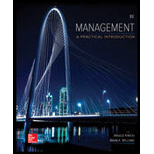
Concept explainers
To determine:
Two principle types of change
Introduction:
The forces in the organization have a different nature. One type could be proactive and the other reactive. Both the type of changes is made in different circumstances.
Answer to Problem 1UTC
Solution:
The reactive change is the response to an opportunity or problem while the proactive change is the preparation or planning when anticipating a problem.
Explanation of Solution
The changes are made in the organization for survival and bringing improvement on certain things. The employees in any organization are supposed to survive for more time if they can adapt to the changes. The need for reactive change arises when there is some kind of disbalance in the organization that needs to be sorted out. At the other side, the need for proactive change arises when the organization suspects a coming problem.
Both the types of changes are the requirement of the time and for the betterment of the organization. The organizations implement these changes to deal with the problems.
Want to see more full solutions like this?
Chapter 10 Solutions
Management Looseleaf
- What is a good response to this post? Formal leaders play a critical role in the successful implementation of strategy within an organization. Their authority allows them to make key decisions, allocate necessary resources, and hold individuals accountable for performance. This clear decision-making power and influence can foster alignment across teams, facilitate collaboration, and ensure the strategy’s goals are prioritized. Additionally, their position lends them legitimacy and the ability to inspire others, motivating staff to embrace and execute the plan. With ownership over resources, formal leaders are well-equipped to ensure the necessary infrastructure is in place, and their accountability often drives a strong commitment to achieving success. However, being a formal leader in strategy implementation also presents challenges. Leaders can become overwhelmed by the sheer responsibility of managing both high-level strategy and daily operations, leading to burnout or decision…arrow_forwardCreate an expanded outline for InnovateTech an AI powered healthcare platform to the North American market. Use the bold headings listed below as organizational headers for the main sections of the policy manual. Outline three to five short, relevant commentary sentences supported by any necessary citations. This is an opportunity to organize your ideas for your company and to integrate citations from required sources. Strategy Formation Describe InnovateTech. Comment 1 Comment 2 Comment 3 Describe the value chain analysis of InnovateTech. Description of the strategic initiative (goals to be achieved). Strategy Execution–Policies Potential for process re-engineering to achieve the goal more efficiently. Resource allocation policies to support the initiative’s implementation. Human resource management policies to support the initiative’s implementation. Human resource policies to empower people in supporting organizational success. Incentive policies to support the…arrow_forwardCreate an expanded outline for InnovateTech an AI powered healthcare platform to the North American market. Use the bold headings listed below as organizational headers for the main sections of the policy manual. Outline three to five short, relevant commentary sentences supported by any necessary citations. This is an opportunity to organize your ideas for your company and to integrate citations from required sources. Strategy Formation Description of InnovateTech. Example: Comment 1 (citation, if needed). Example: Comment 2 (citation, if needed). Example: Comment 3 (citation, if needed). Value chain analysis of InnovateTech. Description of the strategic initiative (goals to be achieved). Strategy Execution–Policies Potential for process re-engineering to achieve the goal more efficiently. Resource allocation policies to support the initiative’s implementation. Human resource management policies to support the initiative’s implementation. Human resource policies to empower…arrow_forward
- Create an expanded outline for InnovateTech an AI powered healthcare platform to the North American market. Use the bold headings listed below as organizational headers for the main sections of the policy manual. Outline three to five short, relevant commentary sentences supported by any necessary citations. This is an opportunity to organize your ideas for your company and to integrate citations from required sources. Strategy Formation Description of InnovateTech. Example: Comment 1 (citation, if needed). Example: Comment 2 (citation, if needed). Example: Comment 3 (citation, if needed). Value chain analysis of InnovateTech. Description of the strategic initiative (goals to be achieved). Strategy Execution–Policies Potential for process re-engineering to achieve the goal more efficiently. Resource allocation policies to support the initiative’s implementation. Human resource management policies to support the initiative’s implementation. Human resource policies to empower…arrow_forwardFor this Portfolio Milestone, you will create an expanded outline for InnovateTech an AI powered healthcare platform to the North American market. Use the bold headings listed below as organizational headers for the main sections of the policy manual. These headings do not require additional comment. For each subheading, outline three to five short, relevant commentary sentences supported by any necessary citations. This is an opportunity to organize your ideas for your Portfolio Project and to integrate citations from required sources. The Policy Manual Strategy Formation Description of InnovateTech. Example: Comment 1 (citation, if needed). Example: Comment 2 (citation, if needed). Example: Comment 3 (citation, if needed). Value chain analysis of InnovateTech. Description of the strategic initiative (goals to be achieved). Strategy Execution–Policies Potential for process re-engineering to achieve the goal more efficiently. Resource allocation policies to support the…arrow_forwardWhat is a good response to this post? In this week's lecture, one piece that stuck with me is that "informal leaders are only leaders when others recognize them as such...[because] a leader without followers is not a leader" (Module 5 Lecture). When implementing a strategy, I find that there is great success. with execution when leaders get buy-in from informal leaders. Formal leaders "earned their status by developing strong relationships with the people around them and proving themselves, through actions, to be reliable and trustworthy" (Indeed Editorial Team, 2025). Getting teams onboard a strategy will likely yield the best outcome by collaborating often and openly with informal leaders. Without informal leadership buy-in, strategy implementation could be difficult, as these leaders often set the tone for the people within their team. If an informal leader perhaps disagrees with or dislikes a strategy, an informal leader could even negatively influence the team.arrow_forward
- Drawing on ABC's experience in expanding into Mauritania, discuss the significance of the Experience Curve and Learning Effects for firms expanding internationally, and analyse their long-term benefits in a competitive global market. Demonstrates a clear and thorough understanding of both the Experience Curve and Learning Effects, with detailed examples related to ABC’s expansion. Applies the concepts effectively to ABC’s expansion into Mauritania, with clear examples of how these effects manifest in the new market. Effectively incorporates relevant theories and models to support the analysis. Response should be well-organised, with clear and logical arguments that flow seamlessly. The language is concise and appropriate.arrow_forwardEntering foreign markets presents firms with various strategic options. Using the case of ABC's expansion into Mauritania, discuss the key factors influencing a firm's choice of market entry strategy. Demonstrates a clear and detailed understanding of market entry strategies, providing a strong evaluation of the factors affecting ABC’s choice of entry strategy in Mauritania. Applies relevant theories and concepts effectively to ABC’s entry into Mauritania, with strong, context specific examples and explanations. Provides a comprehensive evaluation of the key factors affecting market entry, explaining how each factor influences the choice. Response should be well-organised, with clear and logical arguments that flow seamlessly. The language is concise and appropriate.arrow_forwardExplain with the help of diagram(s) (a) how the producer's and consumer's risks are related to the natural tolerance set at ±30 in a control chart, and (b) how the two risks are involved in the typical OC-curve?arrow_forward
- for University of wales trinity saint david,uk , give me a image with source for see immage as new brand extention. only immage with source.no need to any writing.arrow_forwardfor university of wales trinity saint david give me a conceptual model as follow new brand extention as immage instruction?arrow_forwardmy boss is considering transferring a member of the international staff, a Training Manager , from Mexico City to the US office in Chicago. She has asked me to use the requirements listed below and to make a recommendation regarding pay and benefits to be paid. I need to write her a memo outlining the job requirements and make a recommendation as to the pay and benefits the Training and development specialist should receive. Use the link below to obtain the required information in order to address the boss' questions in the memo she has required. http://www.salary.com/category/salary/# Find a job description for a Training Manager who has full department wide authority and who is considered a lower middle level manager. In order to use this site you will need to compare up to three similar positions. Select the "Free Salary Data" box for the job you will be using. This will bring up a salary bell curve. To determine benefits to be offered and their costs, select the "benefits"…arrow_forward
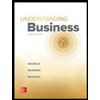 Understanding BusinessManagementISBN:9781259929434Author:William NickelsPublisher:McGraw-Hill Education
Understanding BusinessManagementISBN:9781259929434Author:William NickelsPublisher:McGraw-Hill Education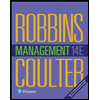 Management (14th Edition)ManagementISBN:9780134527604Author:Stephen P. Robbins, Mary A. CoulterPublisher:PEARSON
Management (14th Edition)ManagementISBN:9780134527604Author:Stephen P. Robbins, Mary A. CoulterPublisher:PEARSON Spreadsheet Modeling & Decision Analysis: A Pract...ManagementISBN:9781305947412Author:Cliff RagsdalePublisher:Cengage Learning
Spreadsheet Modeling & Decision Analysis: A Pract...ManagementISBN:9781305947412Author:Cliff RagsdalePublisher:Cengage Learning Management Information Systems: Managing The Digi...ManagementISBN:9780135191798Author:Kenneth C. Laudon, Jane P. LaudonPublisher:PEARSON
Management Information Systems: Managing The Digi...ManagementISBN:9780135191798Author:Kenneth C. Laudon, Jane P. LaudonPublisher:PEARSON Business Essentials (12th Edition) (What's New in...ManagementISBN:9780134728391Author:Ronald J. Ebert, Ricky W. GriffinPublisher:PEARSON
Business Essentials (12th Edition) (What's New in...ManagementISBN:9780134728391Author:Ronald J. Ebert, Ricky W. GriffinPublisher:PEARSON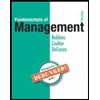 Fundamentals of Management (10th Edition)ManagementISBN:9780134237473Author:Stephen P. Robbins, Mary A. Coulter, David A. De CenzoPublisher:PEARSON
Fundamentals of Management (10th Edition)ManagementISBN:9780134237473Author:Stephen P. Robbins, Mary A. Coulter, David A. De CenzoPublisher:PEARSON





